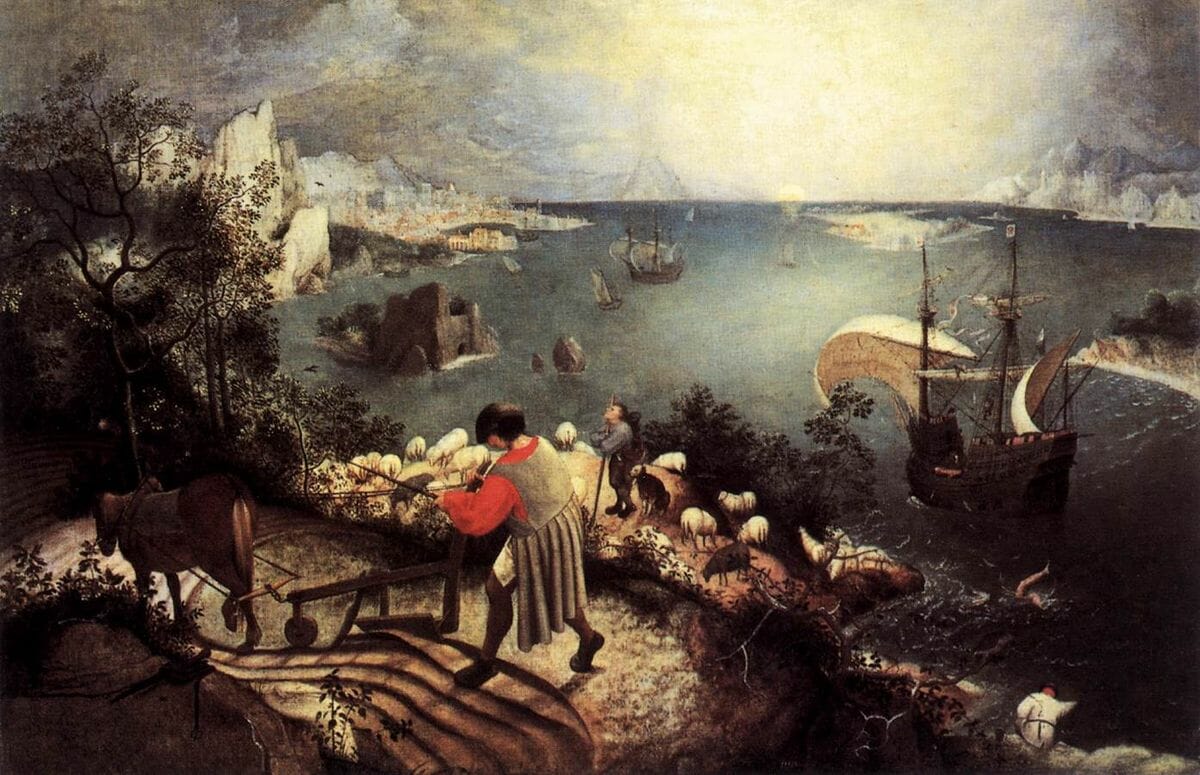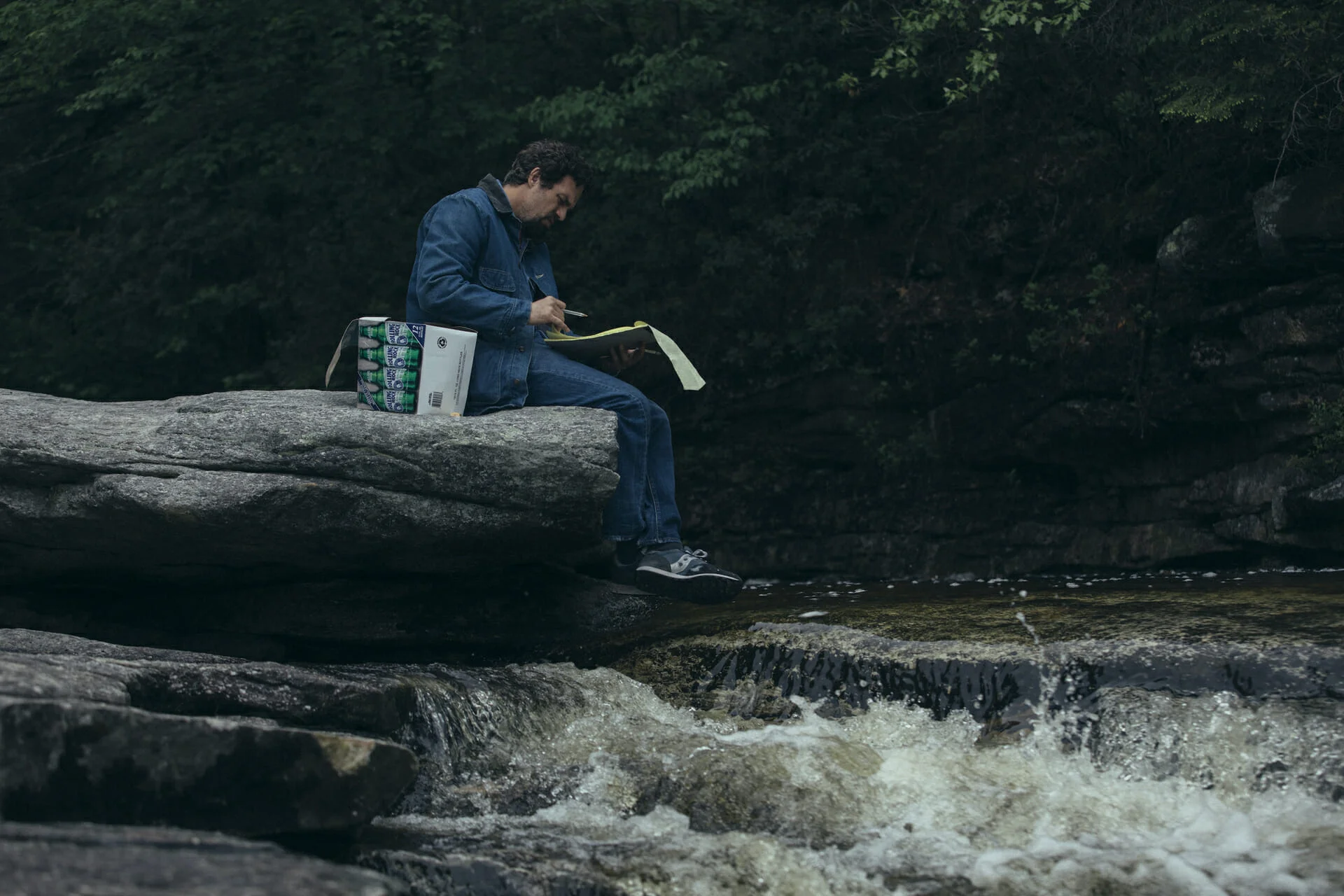
Musée des Beaux-Arts | When Auden met Bruegel
Author
Year
Format
The relation between poetry and painting is longstanding: Horace, in his Ars Poetica, written about 19 BCE, uses the analogy “ut pictura poiesis,” meaning as is poetry, so is painting. In 1938, just before the outbreak of World War II, the English poet Wystan Hugh Auden was staying in Brussels with the writer Christopher Isherwood. Among the halls of the Musées Royaux des Beaux-Arts, he came across Pieter Bruegel’s paintings. The art of the Flemish painter constitutes the genesis of the poem Musée des Beaux-Arts, whose title reminds us of Auden’s visit.

In his work The Fall of Icarus (1558), Bruegel depicts a customary day in the Straits of Messina. There is a shepherd, a ploughman, and several boats cutting through the sea. It takes a closer look to notice the presence of a small pair of white legs sinking in the water. The legendary tragedy of Icarus – whose wax wings melted from flying too close to the sun – does not seem to have upset anybody.
The mundanity of pain
About suffering they were never wrong,
The Old Masters: how well they understood
Its human position: how it takes place
While someone else is eating or opening a window or just walking dully along
The first two words of Musée des Beaux-Arts immediately reveal the theme: suffering. Auden wants to show the impact of suffering on humankind through the perspective of the old Flemish Masters’ vivid works. In their paintings, there is the concrete realization of the world’s indifference towards individual tragedies. In the same way, Musée des Beaux-Arts expresses the mundanity which accompanies pain in everyday life. The poem has two stanzas: both contain references to Bruegel’s works, but while the first one contains indirect clues, the second one is entirely built up as an Ekphrasis, the verbal description of a piece of art.
In Breughel’s Icarus, for instance: how everything turns away
Quite leisurely from the disaster; the ploughman may
Have heard the splash, the forsaken cry,
But for him it was not an important failure […]
Auden’s perspective
Even though the scholars identified the center of Auden’s thesis – the peripheral nature of sorrow – there is still a disagreement concerning the root of this reflection. Some say it is purely philosophical; others claim it has a specific historical and political reason. In 1938, British Prime Minister Neville Chamberlain progressed in his alleged appeasement of Adolf Hitler after the Germans had occupied the Sudetenland in Czechoslovakia, and Europe had turned away “quite leisurely from the disaster.”
Auden’s voice has a subtle irony, which turns the text almost into an informal commentary. There is no established metrical pattern, even though end rhymes permeate the poem. The rhythm is given by the massive presence of enjambments. On the other hand, the length of the lines and the long clauses create a conversational tone. The whole poem appears as a built-up speech of a museum visitor.
Bruegel’s painting inspired several artists: in fact, William Carlos Williams wrote a poem about it, Landscape with the Fall of Icarus, and director Nicolas Roeg used it in his movie starring David Bowie, The Man who fell to Earth.
Tag







